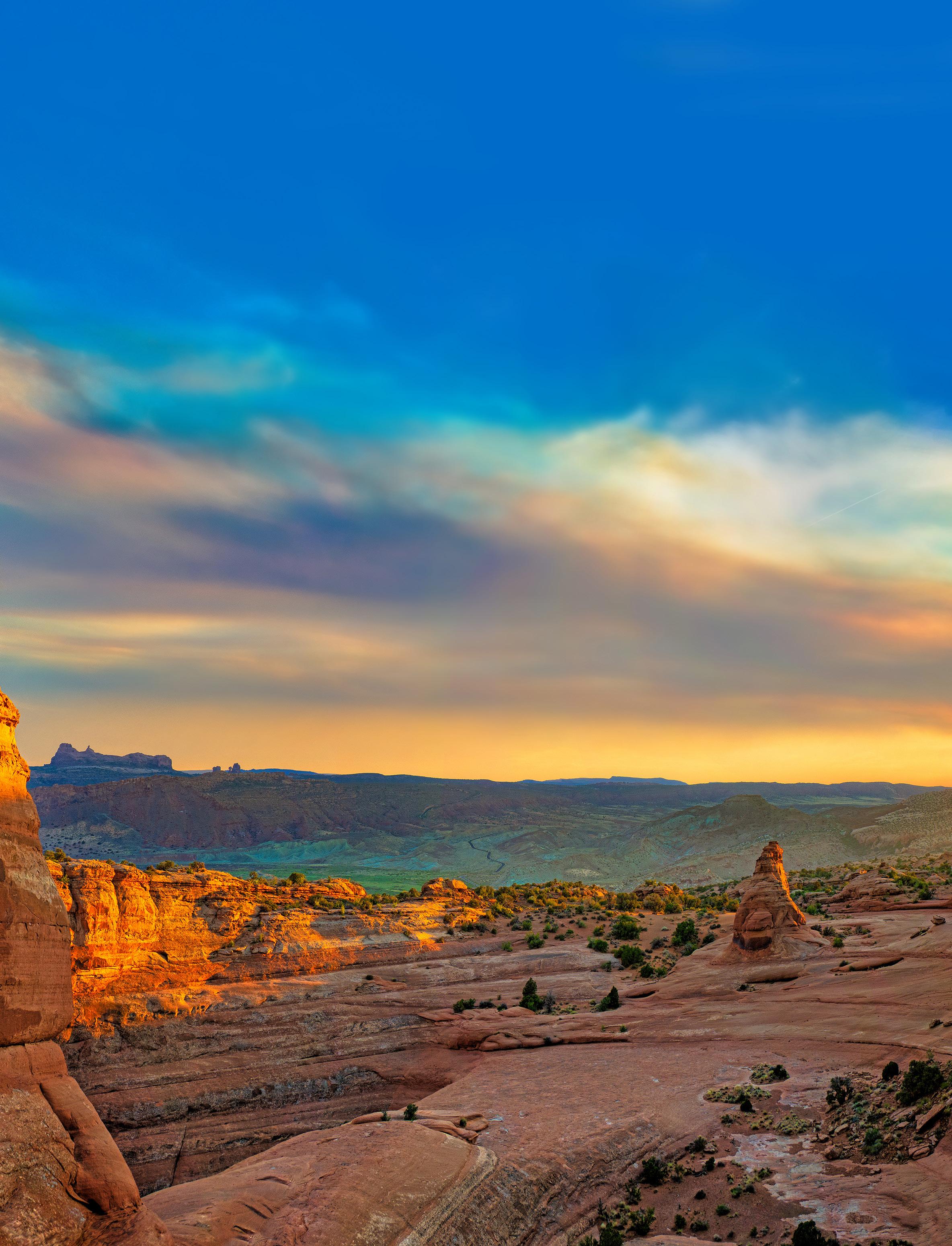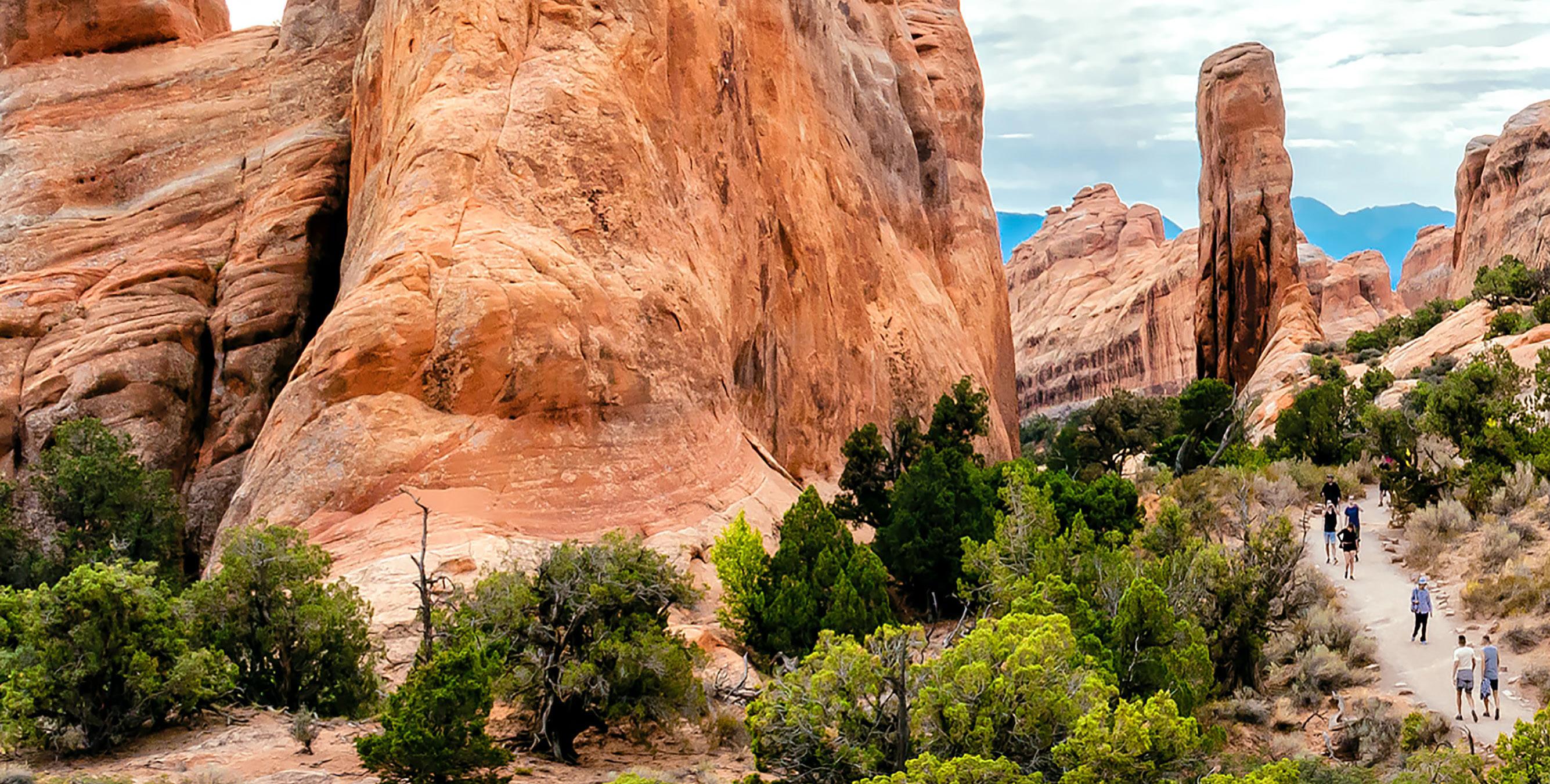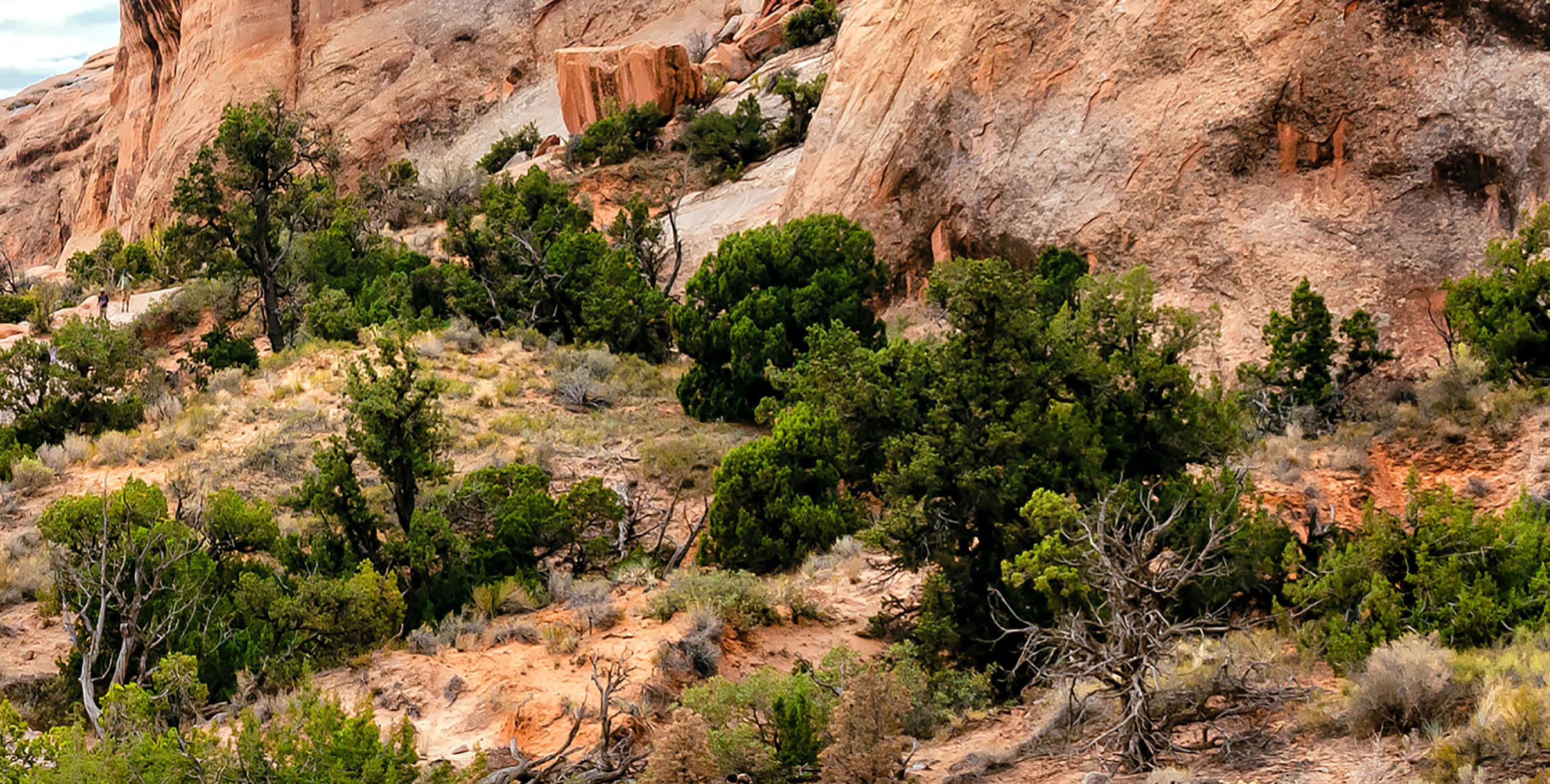
3 minute read
Arches National Park
A red-rock story 65 million years in the making, ever-changing Arches National Park features more than 2,000 natural stone arches — the largest density of natural sandstone arches in the world — along with hundreds of faraway pinnacles, improbably balanced rocks and sheer rock fins. Perched in the high desert in southeast Utah, with elevations ranging from 4,085 to 5,653 feet above sea level, Arches is the result of erosion, deposition and other mind-bending geologic events.
Water continues to shape the impermanent landscape more than anything else. Rain erodes the rock, rushing sediment down washes and canyons to the Colorado River. Streaks of orange-yellow and black desert varnish appear as water cascades down cliffs. Snowmelt pools in fractures and other cavities, freezing and expanding, and breaking off chunks of sandstone. The small recesses that emerge increase with every storm. Fractured rock layers become fins and fins morph into arches. As the arches continue to widen, they eventually collapse, as evidenced by 2008’s fall of Wall Arch.
Simply put, it’s a temporary testament to nature’s wonders that you’ll carry with you all life long.
The Flora And Fauna
While it seems barren upon first glance, Arches is anything but bland. Birds, lizards and some rodents are among the most spotted wildlife in the park, though coyotes, mule deer and black-tailed jackrabbits emerge at dawn and dusk; snakes slither while eagles soar above midday; and nocturnal species like kangaroo rats, skunks, foxes, mountain lions, bobcats, owls and bats rule the roost beneath pitch-black, starlit skies.

Animal life is supported by a wide range of desert-adapted plants, including dormant species that appear only when there’s enough available water, along with spiny perennials, yuccas, cacti and mosses that green up as soon as rains offer relief. Meanwhile, shrubs like purple sage and blackbrush can be spotted in shallow, sandy soil and Mormon tea and greasewood thrive in alkaline soil.
The Weather
Blazing-hot summers, cold winters and minimal rainfall add up to intense conditions in the park. Part of the Colorado Plateau, the high desert environment experiences wide fluctuations in temperature. It’s most temperate — not to mention busiest — April through May and September through October, when average daytime highs are between 60 F and 80 F, dropping to an average 30 F to 50 F at night. Winters, while cold, offer a unique perspective and contrasting landscape, with highs averaging 30 F to 50 F and lows that can dip to 0 F. Although major snowfalls are rare, small ones can lead to road closures. Check the park’s website for the latest weather, road and trail conditions.
THE HIKES, DRIVES AND VIEWPOINTS
Delicate Arch
Few come without hiking 3.2 shadefree miles to Delicate Arch, which climbs 480 feet up a steep slickrock slope. The out-and-back trail near Moab is the only way to view the formation up close. Note that the Lower Delicate Arch Viewpoint — found just down the road — requires nothing more than a short stroll over flat ground to see it from a mile away. Meanwhile, the Upper Viewpoint provides a less obstructed view but does require a half-mile walk with some stairs.
Fiery Furnace Hike
A ranger-led Fiery Furnace hike is another essential trek, though you can also opt for a self-guided tour by reserving an individual permit in advance. An experience unlike any other in the park, you need to know what you’re getting into since the trail is not well-marked, it features dead ends and it requires navigating complex passages demanding a level of agility. A labyrinth of narrow passages that cut through soaring sandstone walls involves scrambling up boulders, crawling through a small arch and hopping across big cracks in the otherworldly landscape.
Devils Garden Trailhead
Beginning at the Devils Garden Trailhead, the 1.9-mile, out-and-back hike to delicate, slender Landscape Arch is fairly flat, with no significant elevation gain beyond a few moderate hills. The effort rewards you with one of the world’s longest stone spans, stretching 306 feet, measuring just 11 feet at its midpoint. Pieces of Landscape Arch have broken off over the last few hundred years, some the size of a car, offering a reminder of the arch’s ephemerality.

Windows Primitive Loop
Short and scenic, 1.2-mile Windows
Primitive Loop encircles North and South Window Arches, with easy access to Turret Arch from a short spur. The Windows section of the park is a great way to while away a day, given it contains the park’s highest concentration of arches, along with jaw-dropping features that include Elephant Butte, the Garden of Eden and the Parade of Elephants and Double Arch — an easy, mostly flat walk — brings you to two massive, joined, soaring arches, the tallest and second-longest in the park.
Park Avenue Trail
The 1.9-mile, out-and-back Park Avenue Trail takes you past incredible rock formations, like Queen Nefertiti and Sausage Rock, descending steeply into a canyon to the tall, column-like Courthouse Towers Viewpoint.
Scenic Arches Drive
Keep your camera at the ready as you ride along exceptionally picturesque Scenic Arches Drive, a 22-mile road that passes many unforgettable natural features, including the La Sal Mountain Viewpoint, Courthouse Towers Viewpoint, Balanced Rock, the Delicate Arch Viewpoint and the Fiery Furnace Viewpoint. It’s also the gateway to the Windows District and Skyline Arch.
About The Park
Location
Southeastern Utah, just north of Moab
ESTABLISHED
April 12, 1929
AREA 76,519 acres










